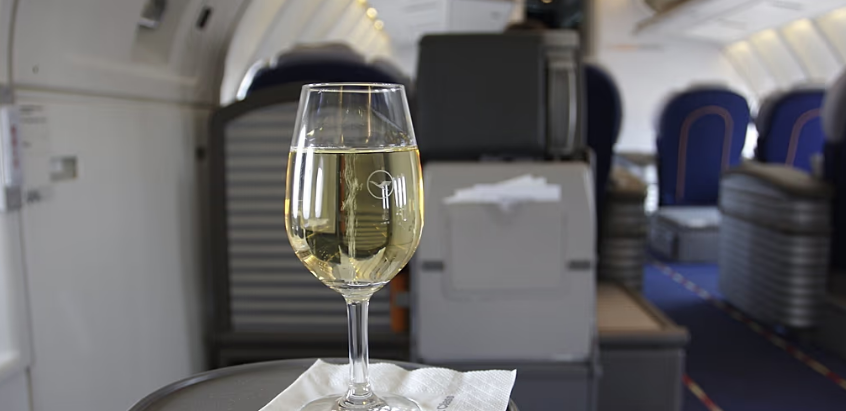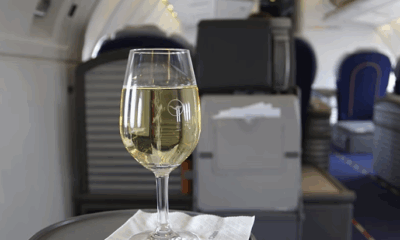Travel
European Train Travel: A Journey Through Past, Present, and Future
Travel
Kazakhstan and Uzbekistan Strengthen Ties in Hospitality Sector at HORECA Expo 2025

The growing partnership between Kazakhstan and Uzbekistan’s hospitality sectors took center stage at the HORECA Expo Uzbekistan 2025 in Tashkent, where industry leaders discussed digital innovation, service culture, and cross-border cooperation shaping Central Asia’s fast-evolving tourism landscape.
The three-day event brought together restaurateurs, policymakers, and service professionals from across the region to exchange ideas on how technology and collaboration are redefining the modern hospitality industry. Representatives from both countries emphasized that digitalisation and shared training are transforming how hotels and restaurants operate, with regional cooperation now seen as key to sustained growth.
Kazakhstan focuses on digital transformation
Kazakhstan’s delegation, led by the Association of Restaurants of Kazakhstan, highlighted the country’s rapid progress in integrating digital tools into everyday operations. Established in 2016, the association now represents around 16,000 restaurants nationwide.
“We started by organizing culinary contests, and soon realized restaurateurs needed a dedicated platform to share experience,” said Irina Lebedeva, Financial Director of the Association. “Now, we’re focused on digitalisation — automating reservations, accounting, and even customer feedback through new technologies.”
Lebedeva noted that modern restaurants are about creating an emotional experience, not just serving food. “Guests come for impressions — the light, music, atmosphere,” she said. “Technology helps us maintain that consistency while giving managers more time to focus on quality rather than paperwork.”
Uzbekistan expands support for global reach
Uzbek officials outlined policies designed to help local entrepreneurs take their culinary ventures abroad. According to Shukhrat Isakulov, head of the Department for Tourism Development under the Ministry of Ecology, the government offers subsidies covering equipment, logistics, and even ingredient transport for restaurateurs opening businesses overseas.
“The programme runs until 2027 and supports those promoting Uzbek cuisine internationally,” Isakulov said. “We want Uzbek hospitality to be visible on the global stage.”
At home, Uzbekistan continues to invest in professional training and digital infrastructure to improve standards across hotels, restaurants, and transport services. Officials say the goal is to raise service quality across the entire tourism value chain.
Shared goals for a regional future
Delegates from both countries agreed that shared traditions and close geography make collaboration natural. With similar languages and a common service ethos rooted in warmth and personal connection, cooperation between Uzbek and Kazakh hospitality sectors is growing rapidly.
“We don’t have closed clubs or membership fees,” Lebedeva added. “If someone wants to learn and develop, the doors are open. Collaboration is what makes the industry stronger.”
Participants concluded that the future of Central Asia’s hospitality industry lies in mutual learning, digital innovation, and shared professional standards — ensuring growth that celebrates both unity and diversity across the region.
Travel
Air Canada Becomes First North American Airline to Offer Free Alcohol on All Flights

Air Canada has announced that economy-class passengers on all its flights will soon enjoy complimentary beer, wine, and snacks — making it the first North American legacy carrier to offer free alcoholic beverages across its entire network.
Beginning this autumn, travellers flying anywhere with the Montreal-based airline — whether on a short domestic route or a long-haul international journey — will receive free refreshments. The move places Air Canada ahead of its U.S. rivals American Airlines, Delta Air Lines, and United Airlines, which only offer complimentary alcohol on select long-haul services. Low-cost carriers such as Spirit, Frontier, and JetBlue continue to charge passengers for alcoholic drinks.
Scott O’Leary, Air Canada’s vice president of loyalty and product, said the initiative was driven by customer feedback and a desire to enhance the in-flight experience. “Food and beverage tend to have a disproportionate impact on customer satisfaction,” he told Reuters, noting that offering complimentary alcohol delivers more perceived value than other cost-cutting measures such as lowering baggage fees.
The new onboard service will also feature Canadian products, highlighting local brands. Morning flights will include oat bars from MadeGood, while passengers departing from Toronto’s Billy Bishop Airport will be offered ginger wellness shots from local producer Greenhouse after 10:30 a.m. Additionally, Air Canada will serve Heineken 0.0, becoming the only North American airline to offer non-alcoholic beer in-flight.
The decision underscores Air Canada’s strategy to differentiate itself at a time when passenger comfort and onboard service have become key competitive factors. However, not everyone in the aviation industry is celebrating. The growing issue of alcohol-fueled passenger misconduct has raised concerns about expanding in-flight drink service.
According to the International Air Transport Association (IATA), incidents involving unruly passengers have increased sharply in recent years, rising from one per 1,053 flights in 2017 to one per 480 flights in 2023. More than a quarter of these cases involved alcohol, often consumed before boarding.
Authorities in both North America and Europe have taken steps to address the problem. The U.S. Federal Aviation Administration’s “Zero-Tolerance Policy,” introduced in 2021, imposes fines of up to $37,000 for alcohol-related infractions, including consuming personal liquor onboard. In Europe, budget carrier Jet2 has restricted alcohol sales before 8 a.m., while Ryanair’s CEO has proposed a two-drink limit at airport bars.
Despite these concerns, Air Canada is betting that a well-managed complimentary drink program can improve customer satisfaction without compromising safety. The airline hopes its approach will encourage loyalty and position it as a premium choice for economy travellers — one where passengers can toast to a more comfortable flight, responsibly.
Travel
Helsinki Tops Global Ranking as World’s Most Sustainable Tourist Destination

As overtourism sparks housing crises, strains infrastructure, and devastates ecosystems across the globe, a handful of cities are proving that sustainable tourism is possible. According to the 2025 Global Destination Sustainability (GDS) Index, Helsinki has once again been named the most sustainable tourist destination in the world.
The annual ranking evaluates more than 100 cities using 70 indicators across four key areas: destination management, supply chains, social sustainability, and environmental performance. These include metrics such as visitor management, airport emissions, safety, and commitments to climate action.
For the second consecutive year, the Finnish capital secured the top spot. “Helsinki continues to raise the bar by defining the ‘next practices’ of regenerative destination management,” said Guy Bigwood, CEO of the GDS-Movement. “Through bold climate action, pioneering sustainability strategies, and a steadfast commitment to transparency, the city demonstrates exceptional vision.”
Helsinki’s Sustainable Tourism Model
Helsinki’s winning strategy rests on years of coordinated projects designed to limit the environmental footprint of tourism while benefiting residents. The city actively measures the carbon impact of visitors, aligns its tourism development with its climate roadmap, and provides guidance to businesses on adopting green practices.
“Tourism in Helsinki is developed with all aspects of sustainability in mind,” said Nina Vesterinen, the city’s tourism director. “Our aim is for Helsinki to be a better place when a visitor leaves than it was before they arrived.”
Partnerships between municipal authorities and the private sector have been key. Nearly all of Helsinki’s larger hotels—99 percent of those with more than 50 rooms—are now environmentally certified, compared with far lower rates across Europe. Conference centers, tour operators, and transport providers are also increasingly gaining certification. Meanwhile, the city has invested in greener electricity and district heating to cut emissions across sectors.
Global Recognition and Tourist Demand
Earlier this year, Helsinki became the first city of over half a million residents to achieve the Green Destinations certification, one of the strictest benchmarks in sustainable tourism. The designation, endorsed by the Global Sustainable Tourism Council, highlights Helsinki’s work in protecting the environment, people, and cultural heritage.
The city’s efforts appear to resonate with travelers. Tourism in Helsinki is booming, with overnight stays by international visitors rising 19 percent in the first seven months of 2025 compared with the same period in 2024, according to Statistics Finland.
Industry-wide trends also suggest demand for responsible travel is increasing. A 2025 report by Booking.com found that 93 percent of travelers globally want to make more sustainable choices, with many already adjusting their habits to minimize harm to local communities and the environment.
Looking ahead, Helsinki’s challenge is to build on its achievements while tackling the climate impact of long-distance travel. “A large proportion of international tourists visiting the city arrive by boat or by air, the climate impacts of which we acknowledge,” Vesterinen noted. “Accordingly, we are aiming to attract more tourists from Finland and neighboring European regions.”
-

 Entertainment1 year ago
Entertainment1 year agoMeta Acquires Tilda Swinton VR Doc ‘Impulse: Playing With Reality’
-

 Business1 year ago
Business1 year agoSaudi Arabia’s Model for Sustainable Aviation Practices
-

 Business1 year ago
Business1 year agoRecent Developments in Small Business Taxes
-

 Home Improvement12 months ago
Home Improvement12 months agoEffective Drain Cleaning: A Key to a Healthy Plumbing System
-

 Politics1 year ago
Politics1 year agoWho was Ebrahim Raisi and his status in Iranian Politics?
-

 Business1 year ago
Business1 year agoCarrectly: Revolutionizing Car Care in Chicago
-

 Business1 year ago
Business1 year agoSaudi Arabia: Foreign Direct Investment Rises by 5.6% in Q1
-

 Sports1 year ago
Sports1 year agoKeely Hodgkinson Wins Britain’s First Athletics Gold at Paris Olympics in 800m






























